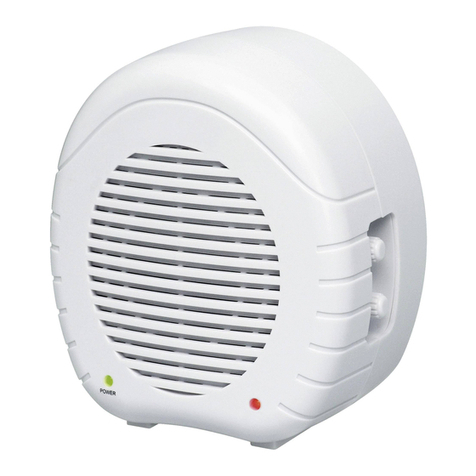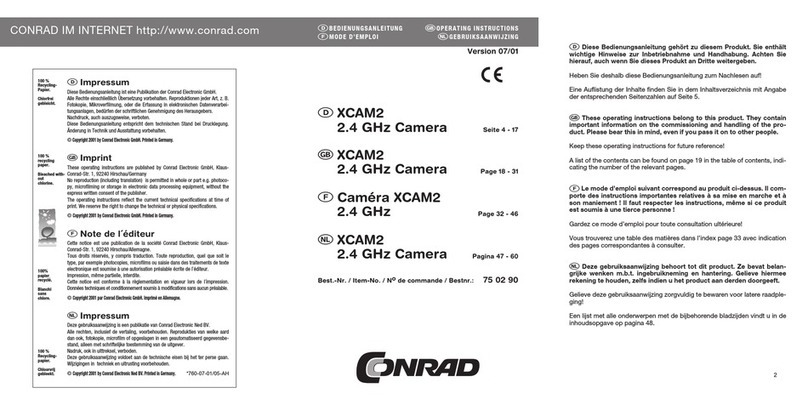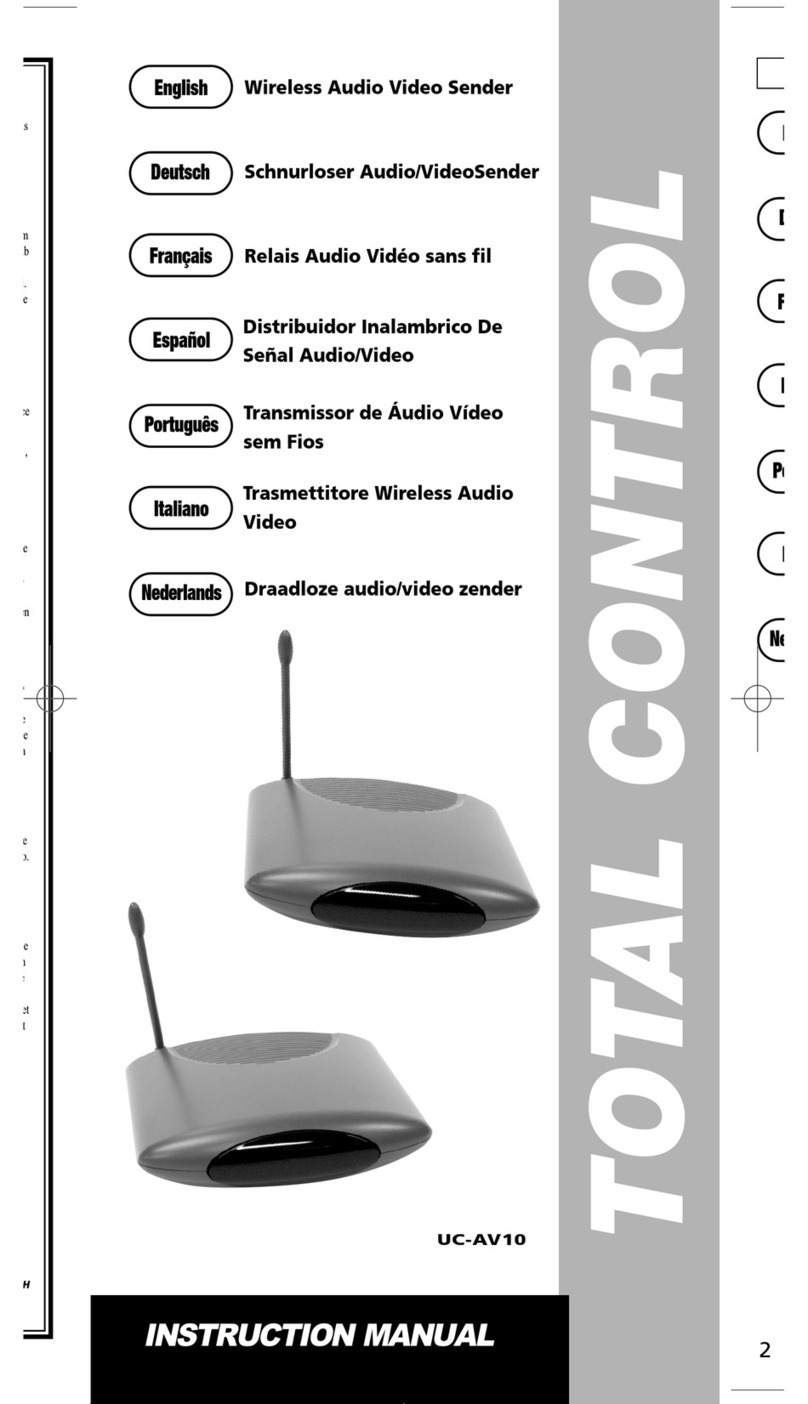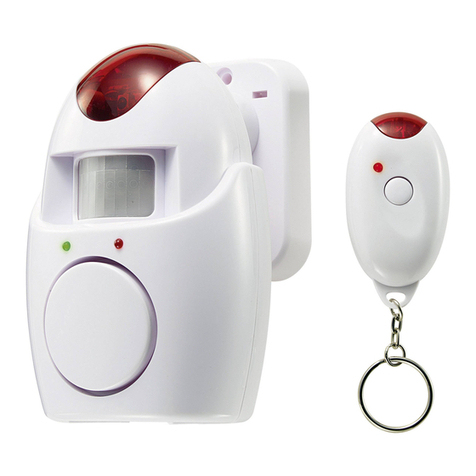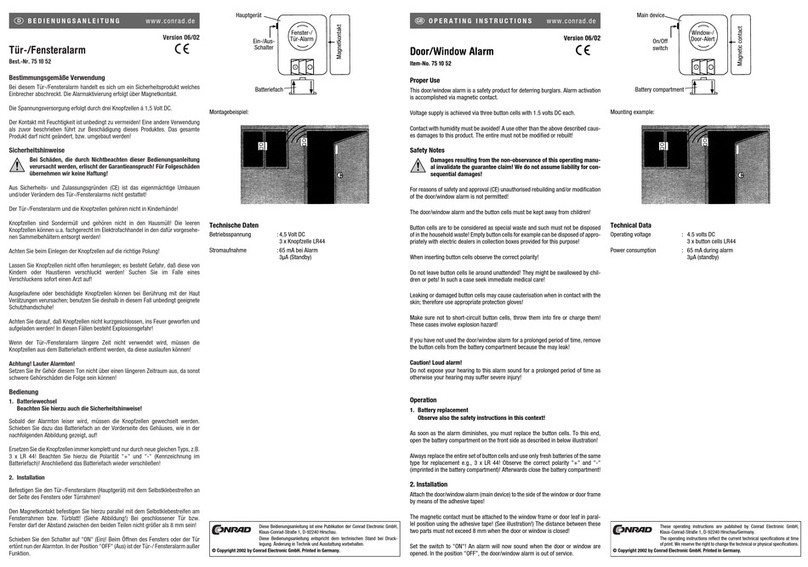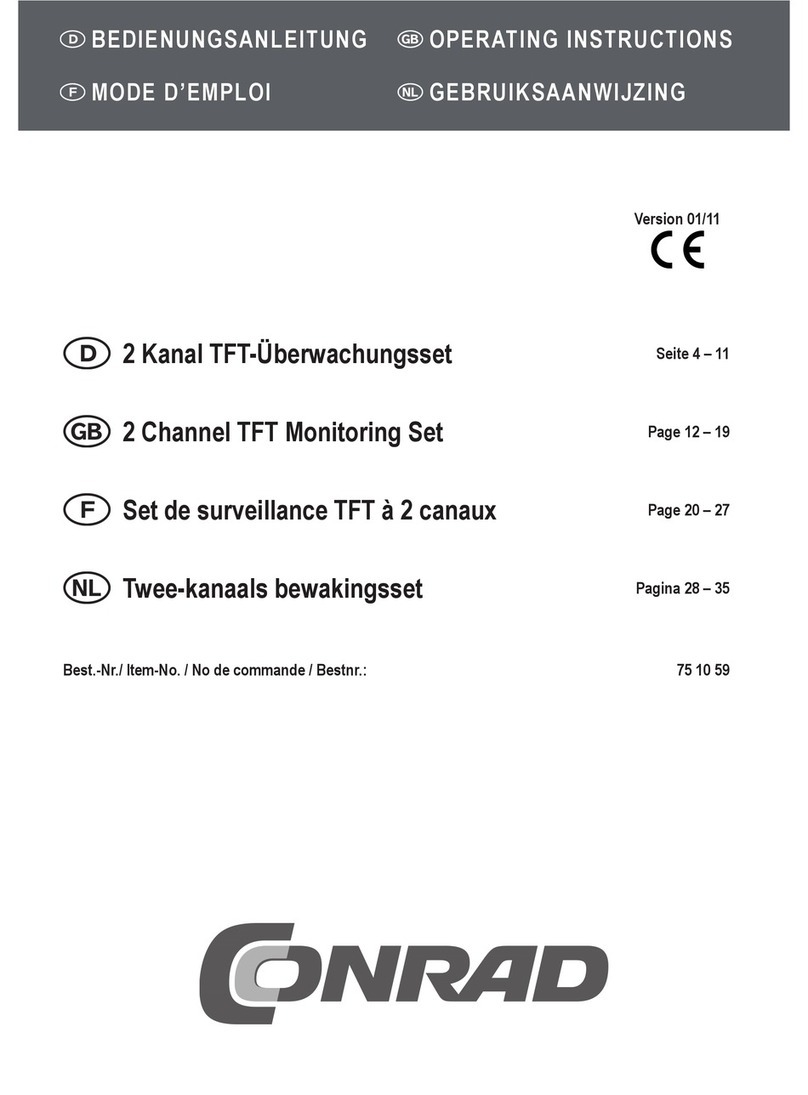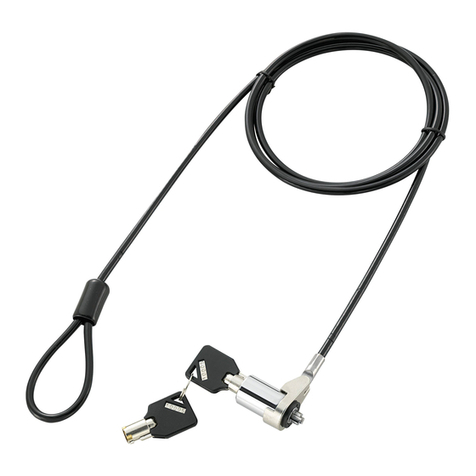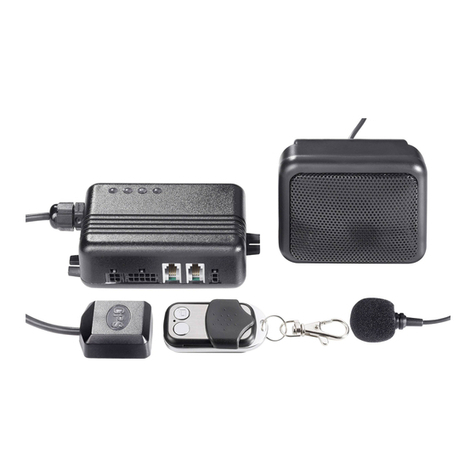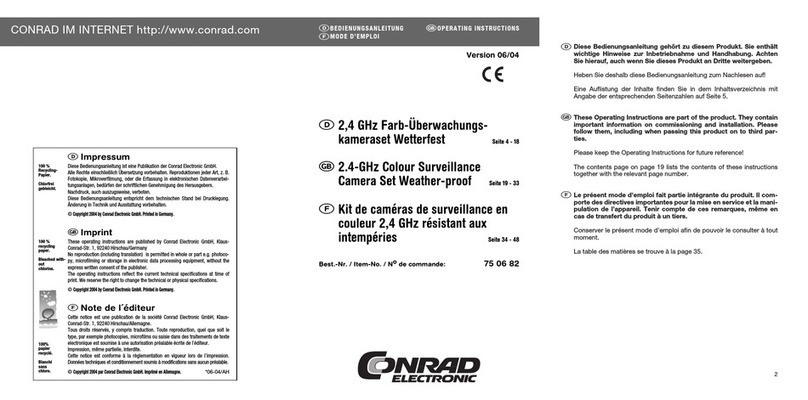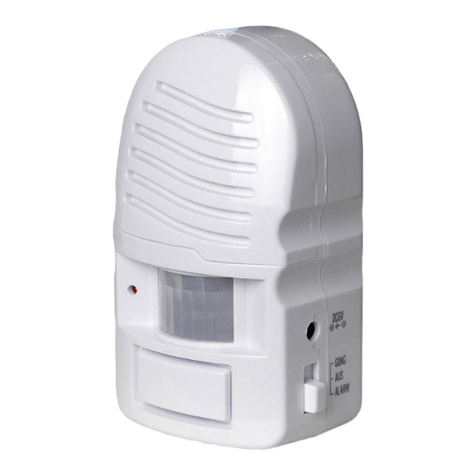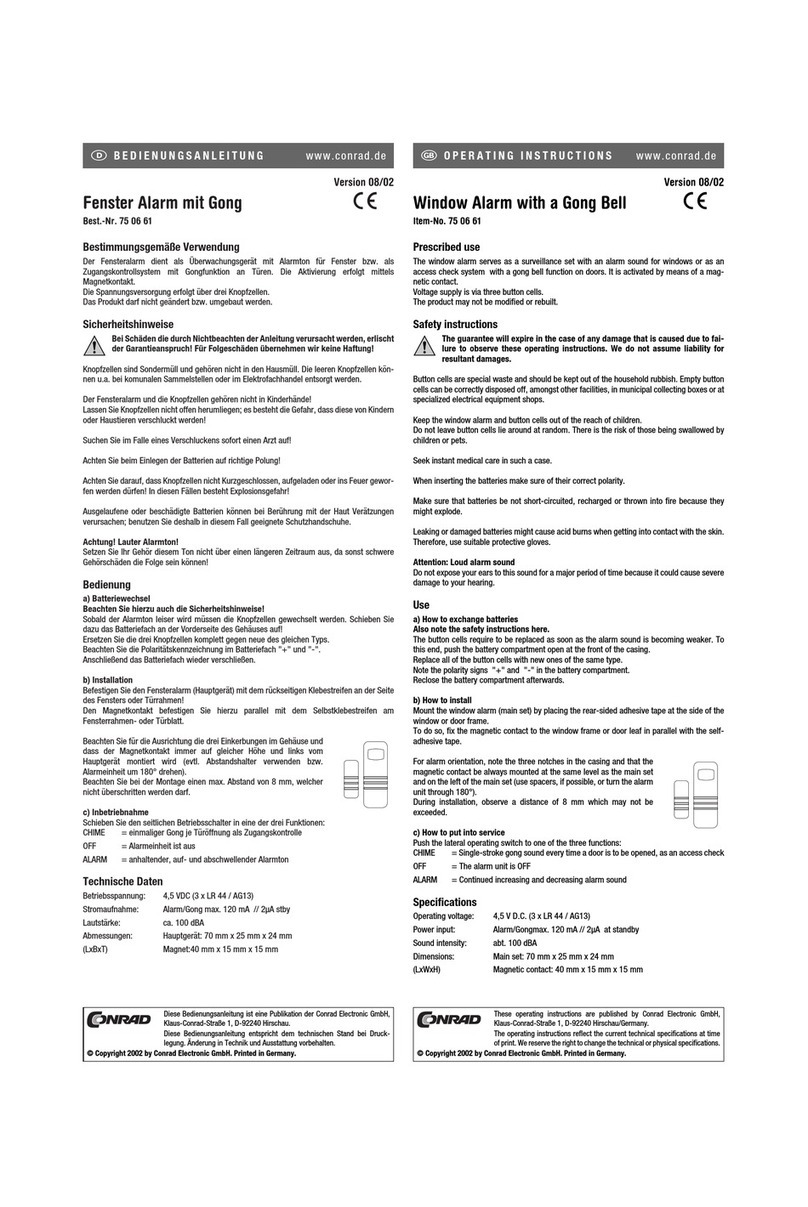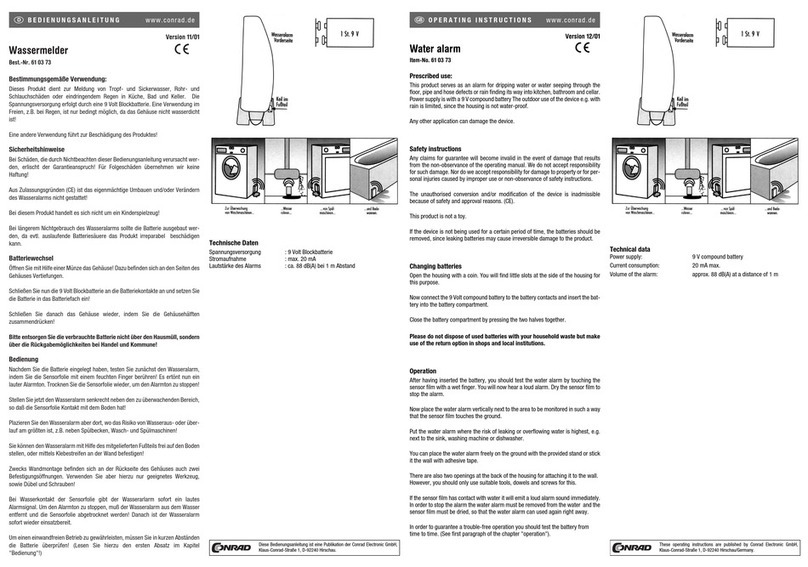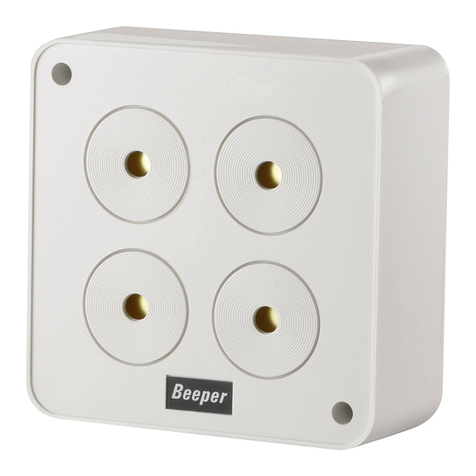
3
3.8 Fault warning silence
When the device is in a fault state, press the TEST/SILENCE button, it
will enter the fault warning mute state for about 9 hours, while dis-
playing „ „ on the LCD, and the FAULT indicator (yellow) remains
ashing.
NOTE: The silence feature of fault warning is a temporary action to
cancel warning sound eect, you need replace the device as soon
as possible.
3.9 End-of-life warning
If the device chirps 3 times every 40 seconds with FAULT indicator
(yellow) ash and the LCD displays ‘End’. It indicates end of life of CO
alarm. You need to immediately replace the CO alarm.
3.10 End-of-life warning silence
When the device is in the End-of-life state, press the TEST/SILENCE
button, it will enter the End-of-life warning mute state for about 9
hours, while displaying „ „ on the LCD, and the FAULT indicator
(yellow) remains ashing.
NOTE: The silence feature of fault warning is a temporary action to
cancel warning sound eect, you need replace the device as soon
as possible.
3.11 Test the device
When the device under normal operation status, you can test the
device by TEST/SILENCE button, PRESS and HOLD the TEST/SILENCE
button, you should hear alarm sound pattern (<85dB) and with a cor-
responding ALARM indicator (red) ash. After the eighth sound, the
device will issuing a normal alarm volume (≥85dB). Test process will
stop when release the button. The LCD displays all segments during
testing.
NOTE: After the TEST/SILENCE button is enabled, the alarm sounds
and the red alarm light ashes. This does not indicate that CO is
present.
NOTE: Test the device every year! If at any time your device does
not perform as described, replace it immediately.
3.12 Automatic brightness adjustment
Automatic brightness adjustment of POWER indicator (green). If the
ambient brightness is very low (night, indoor & lights o). The as-
hing brightness of the POWER indicator (green) will be reduced, so
as to reduce the impact of the standby indicator light
on people.
NOTE: This function does not aect the brightness of the ALARM
indicator (red) and the FAULT indicator (yellow).
3.13 Weekly test
Recommend test the alarm weekly by pressing the TEST/SILENCE
button to ensure the normal operation of the equipment.
3.14 Alarm memory
48 hours alarm memory function. When the device detects CO and
alarms, when the device return to standby mode, and the CO concen-
tration <20PPM, LCD displays „AL“ and ALARM indicator (red) ash
per 40 seconds. After press TEST/SILENCE button or after 48 hours,
will reset the historical memory function and enter normal operation
status.
4. What to do if the alarm sounds
WARNING! – Actuation of your CO alarm indicates the presence of
Carbon Monoxide (CO) which can KILL YOU.
WARNING! – Action of this device indicates the presence of dan-
gerous levels of CO! CO can be fatal!
If the alarm sounds:
4.1 Keep calm and open all doors and windows to increase the rate
of ventilation. Stop using all fuel-burning appliances and ensure, if
possible, that they are turned o, e.g. for gas appliances, isolate the
emergency control valve;
4.2 If the alarm continues to be activated, then evacuate the premi-
ses. Leave the doors and windows open, and only reenter the buil-
ding when the alarm has stopped. In multi-occupancy and multi-sto-
rey premises, ensure that all the occupants are alerted to the risk;
4.3 Get medical help for anyone suering the eects of carbon mon-
oxide poisoning, and advise that carbon monoxide inhalation is su-
spected;
4.4 Telephone the appropriate appliance servicing and/or mainte-
nance agency or, when necessary, the relevant fuel supplier on their
emergency number or the national Gas Emergency Service Provider,
if appropriate, so that the source of carbon monoxide emissions can
be identied and corrected. Unless the reason for the alarm is obvi-
ously spurious, do not use the fuel-burning appliances again, until
they have been checked and cleared for use by a competent person
according to national regulations.
5. Battery installation/replacement
Once chirps with corresponding FAULT indicator (yellow LED) as-
hing once every 40 seconds indicates that the battery is low battery,
you must to replace with battery specied, please see “8. Specica-
tion“.
To install or replace the battery in unit, please perform the following
steps:
5.1 Take down the unit from screw heads of the wall.
5.2 Open battery compartment.
5.3 Remove the old battery, and replaced by new battery.
5.4 Put the battery into the battery box.
5.5 Hook the alarm over the screw heads onto keyholes in back of
the unit.
5.6 Test alarm using the TEST/SILENCE button, if the testing alarm is
ok, means the product can work normally.
WARNING! - Use only the battery specied. Use of dierent battery
may have a detrimental eect on the CO alarm. A good safety mea-
sure is to replace the battery at least once a year.
CAUTION: Please replace new 2pcs same type batteries in the me-
antime.
CAUTION: Test the alarm for correct operation using the TEST/SI-
LENCE button, whenever the battery is replaced!
6. Gerneral maintenance
To keep your CO alarm in good working order, please follow these
simple steps:





